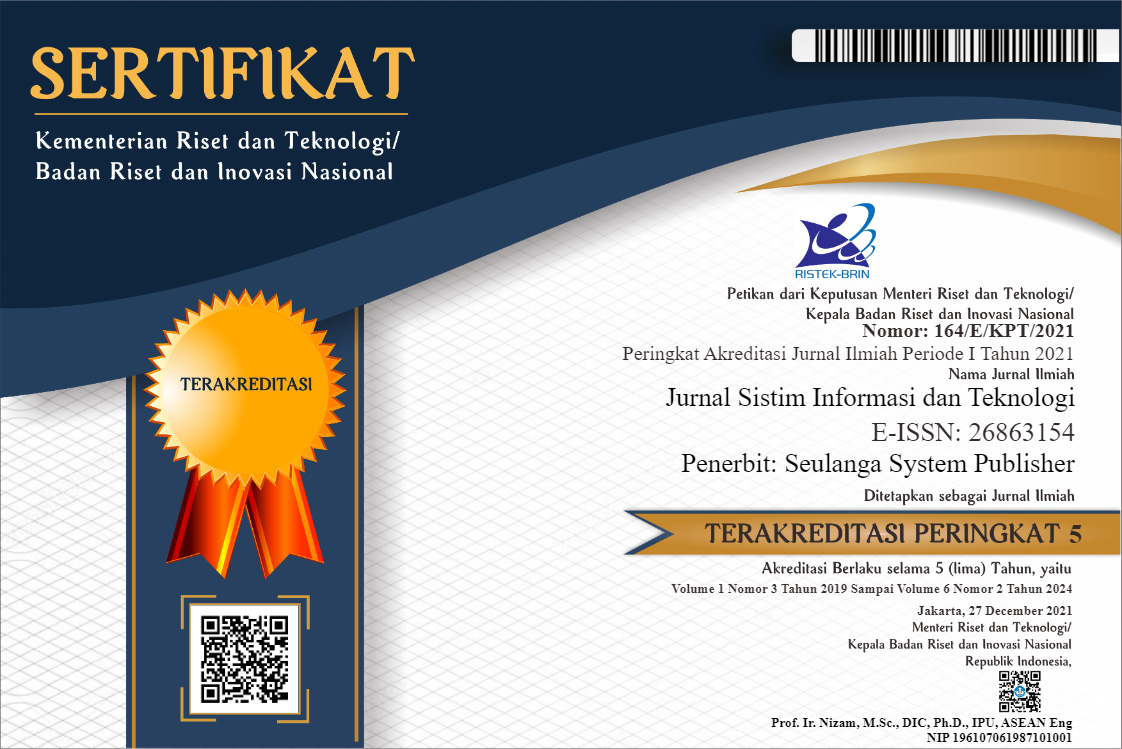Level of Acceptance and Use Measurement of Electronic Money Technology Using UTAUT Model
DOI:
https://doi.org/10.60083/jsisfotek.v5i3.275Keywords:
Electronic Money, User Acceptance, Use Behavior, Cashless Payment, UTAUTAbstract
By increasing transaction speed and decreasing transaction costs, electronic payment innovations make cashless payment systems more effective. Electronic money is used in a variety of transactions, such as paying for commuter line tickets, paying for Trans Jakarta tickets, paying tolls, and shopping at supermarkets. However, in practice, it shows that users' understanding and awareness of electronic money are still not optimal, and there are problems with electronic money reader sensors. Therefore, it is crucial to undertake research on the acceptance and use of electronic money because this is one of the key elements in the system's successful deployment. In order to ascertain the current state of user acceptance and usage of electronic money, this study used the PLS-SEM analytic technique to look at the factors from the UTAUT 2 model that have an impact on user acceptability of electronic money. According to the findings, users who utilize electronic money have behavioral intentions and use behaviors that are 88% and 26%, respectively. Then, of the 12 hypotheses put out, Social Influence on Behavioral Intention and Facilitating Conditions on Behavioral Intention were the two that were rejected. Despite the fact that 60% of new users continue to use electronic money after one to two years, not enough nominal is utilized in a single week, according to the results of using it.
References
Morosan, C., & DeFranco, A. (2016). It’s about time: Revisiting UTAUT2 to examine consumers’ intentions to use NFC mobile payments in hotels. International Journal of Hospitality Management, 53, 17–29. https://doi.org/10.1016/j.ijhm.2015.11.003
Nasir, M. (2013). Evaluation of Student Information Technology Acceptance in Palembang Using the UTAUT Model. National Seminar on Information Technology Applications (SNATI). (12), C36–C40. Retrieved from http://journal.uii.ac.id/index.php/Snati/article/view/3006
Agus Rofi’i, Firdaus, D. R., & Moridu, I. (2023). The Analysis of User Acceptance Using UTAUT and Delone & McLean Model: Study Case of Banking Mobile Application. JISTE (Journal of Information System, Technology and Engineering), 1(1), 21–25.
Ramdhani, A. B., Rachmawati, I., Sidiq, F., & Prabowo, A. (2017). The Effect of Technology Adoption of Telkomsel Cash Electronic Money Services Using the Utaut2 Approach the Effect of Technology Adoption of Electronic Money Services Telkomsel Cash Using Utaut 2. 4(1), 53–61.
Saufi, M., Rofi’i, A., & Firdaus, D. R. (2023). The Analysis of User Intention to Subscribe Netflix Using UTAUT Framework. JISTE (Journal of Information System, Technology and Engineering), 1(1), 16–20.
Subiyakto, A. (2017). Development of the Readiness and Success Model for Assessing the Information System Integration The author version of the presented paper ( In publishing ) Development of the Readiness and Success Model for Assessing the Information System Integration. In International Conference on Science and Technology (ICOSAT). Jakarta.
Usman, R. (2017). Characteristics of Electronic Money in the Payment System. 32(1), 134–166.
Sarumaha, Y. A., Firdaus, D. R., & Moridu, I. (2023). The Application of Artificial Bee Colony Algorithm to Optimizing Vehicle Routes Problem. JISTE (Journal of Information System, Technology and Engineering), 1(1), 11–15.
Waspada, I. (2012). Acceleration of Adoption of Information Technology Transaction Systems to Increase Accessibility of Banking Services. Jurnal Keuangan Dan Perbankan, 16(1), 122–131.
Ferdiansyah, H., Komaria, N., & Arief, I. (2023). The Application of Support Vector Machine Method to Analyze the Sentiments of Netizens on Social Media Regarding the Accessibility of Disabilities in Public Spaces. JISTE (Journal of Information System, Technology and Engineering), 1(1), 6–10.
Hakim, S., Laelawati, L. N., & Mardiana, R. (2022). The role of digital skills and technological innovation in improving the performance of small and medium industries: Systematic literature review. ICOBIS 2022.
Firdaus, D. R., Harto, B., & Ferdiansyah, H. (2023). The Effectiveness Analysis of Distance Learning by Optimizing the Use of Information Technology. JISTE (Journal of Information System, Technology and Engineering), 1(1), 1–5.
Downloads
Published
How to Cite
Issue
Section
License
Copyright (c) 2023 Jurnal Sistim Informasi dan Teknologi

This work is licensed under a Creative Commons Attribution 4.0 International License.









